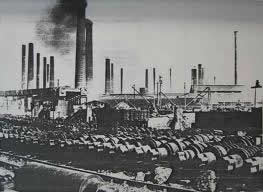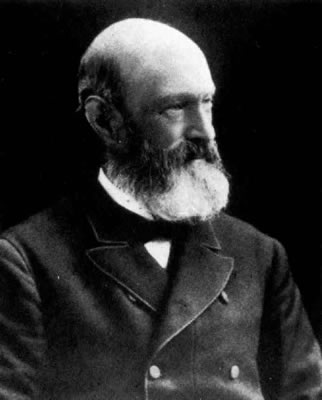History
Colville Park Golf Club is located within the Jerviston Estate, to the North East of Motherwell town centre. In its day the estate accounted for some 240-250 acres of land (160 Acres of which were parkland). The origins of the estate can be traced back to the mid-1500s and the construction of a small castle (a few remnants of which still remain today). The castle which would eventually come to be known as (the original) Old Jerviston House, was occupied during the period of the 16th Century by the Baillies of Lamington, who it is believed were descendants of the Balliols – Twice Kings of Scotland and the Bradfutes – the family to which William Wallace’s wife belonged. Robert Baillie himself was a distinguished principle of Glasgow University.
By the mid-18th Century the estate was under the new ownership of a James Canison. It was during his reign that the famous Scottish Architects Robert and James Adam (of Edinburgh New Town notoriety)were commissioned to design and construct a new mansion house on the estate to the east of the original castle. The new house was completed in 1782 in the Neo-Classical architectural style of the day. It was this “Jerviston House” which would one day become the original club house for Colville Park Golf Club.
Whilst it is not exactly clear as to when the estate was to become home to David Colville Jnr, a prominent member of the Colville family who helped built Scotland into one of the industrial power houses in iron and steel manufacture, we do know this was one of the most significant moments in the evolution of Colville Park Golf Club.
For those who are familiar with Motherwell’s past will know that the town’s history will forever be entwined with rise and fall of the Scottish steel industry. Indeed in its prime Motherwell was the heartland of Scottish, if not British, steel making and home to one of the most important industrialist families in British industry – the Colvilles. The company of Colville & Sons was founded 1871 by David Colville Snr. which he ran with his sons David Jnr, Archibald and John. The first sections of malleable iron produced by the firm came out of their newly opened Dalzell Works plant as early as 1872. After a steady start the fledgling company got its first big commission in 1879 following the tragic disaster which befell the Tay Bridge when they won the job of manufacturing the iron beams for the new bridge. It was not, however, until 1880 that the company made its big break through into steel manufacturing from where it was never to look back. Colville & Sons grew and grew in subsequent years and were instrumental in the supply of steel for ships, weapons, ammunition etc. during the two World Wars which were to follow. Indeed the company were so successful that in 1951 they cut ground on one of the largest steel works in Europe reportedly costing £20,000,000 with 2 batteries of 35 coke ovens, a blast furnace and a melting shop with 3 furnaces. These works would come to be nick named Steelopolis - which after Nationalisation of the Iron and Steel industry in 1967 became the jewel in British Steel’s crown known as – Ravenscraig.
The Colvilles were not just great businessmen, they were also great humanists. It was documented that David Colville Snr. would regularly mingle with his workers on his way to work and took great enjoyment getting to know them and their families. Indeed it was said that his most prized possession was a book signed by all his staff presented to him on one of his wedding anniversaries. It was no surprise then that following the passing of David Colville that the family decided to turn his estate into a public park. Thus, during the 1920s Colville Park was born of the aspiration to improve worker welfare and quality of life through the promotion of health and leisure. The estate was not just for the employees of Dalzell Iron and Steel Works but their families, friends and the residents of Motherwell as a whole.
The official opening of Colville Park and its associated golf club took place on 19 May 1923 after the estate was gifted by David, Norman and John Colville to the workers of Dalzell Iron and Steel works as a memorial to their fathers David, Archibald and John. Upon the day of its opening the Estate boasted a 9 hole golf course, 5 tennis courts, 2 bowling greens, a football field and a wealth of mature green open space - described at the time as “one of the finest recreation centres in Scotland”. An oasis in the smog filled atmosphere of the industrial machine that Motherwell had become. In order to maintain the new facilities Dalzell Social Committee (lead by John Colville Jnr) was charged with the running of Colville Park and each worker at Dalzell Works gave the modest sum of 1 â…Ÿ2 d per week which was matched by the company.
With the opening of the park in 1923, the former family home, Jerviston House, was converted into a club house comprising on the ground floor - dining hall, billiard room, function hall (for dances, drives, marriages and social functions) and on the first floor – club room for tennis, locker room for golf, library, reading room & rest room. Jerviston House remained the club house until the early 1960s when it was decided that the old building both required a significant amount of work and was struggling to meet the modern demands placed on it by a growing membership, subsequently it was decided that a new facility should be built and the old house was demolished in 1966. By the mid-1960s the new club house was finished, housing all the same facilities as the old club house but in new modern facilities. The new club house came to be known as New Jerviston House and remains the home to Colville Park Golf Club today.
The success of Colville Park meant that by as early as 1925 renowned golf course designer James Braid had been commissioned to refine and extend the golf course to 18 holes which stretched over some three and a half miles in distance. On its opening in 1925 the golf club had some 400 members, today the membership stands at just over 900. Braid would again return in 1928 to design and implement one of his trade mark bunkering schemes. It was reported that at the time it was “reckoned by competent judges to be one of the best in the West of Scotland”. This 18 hole layout remains mainly unchanged and is the same challenge members and visitors pit their wits and skill against today.






